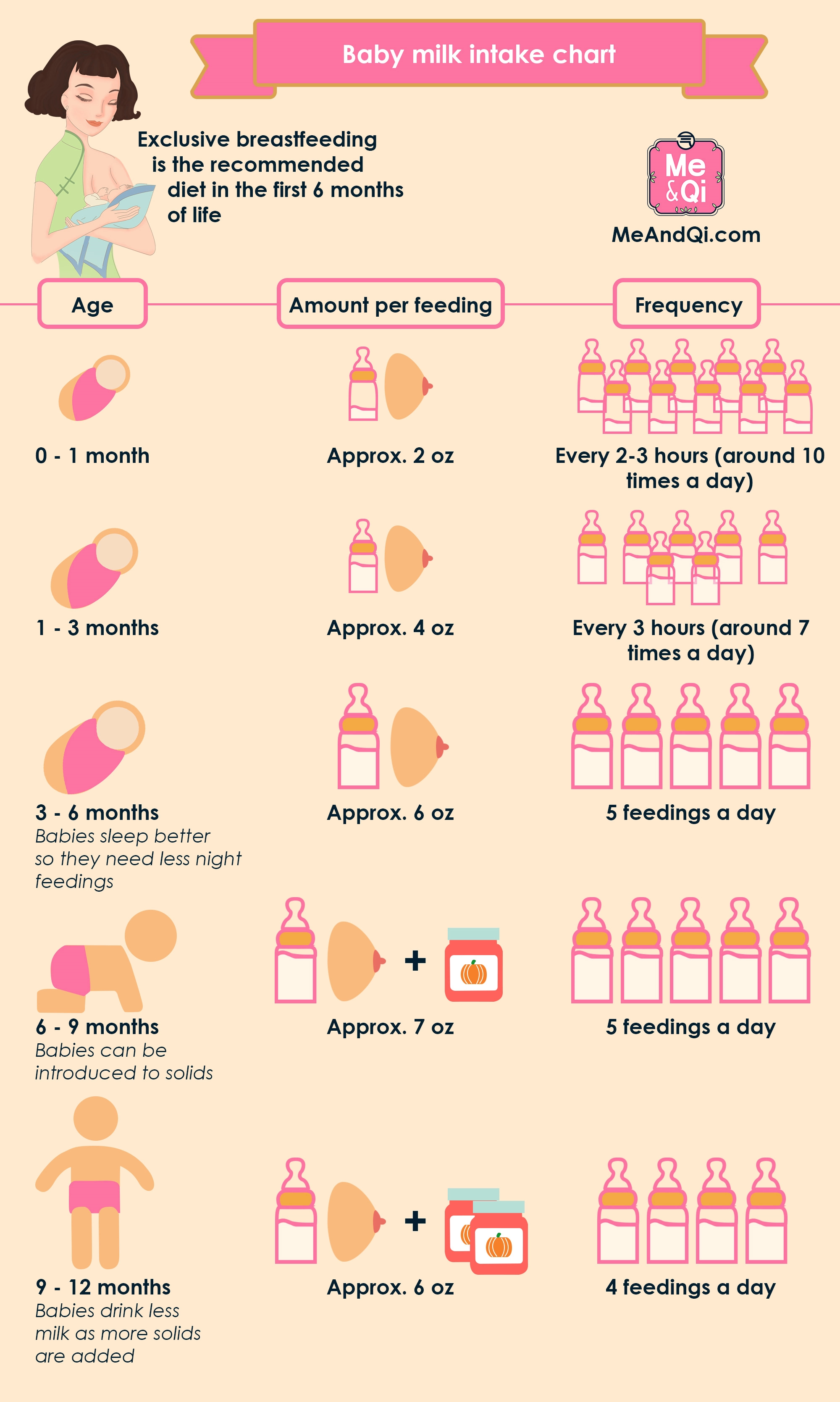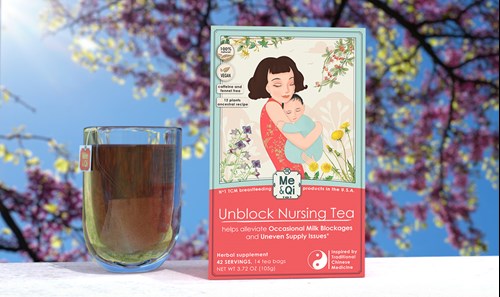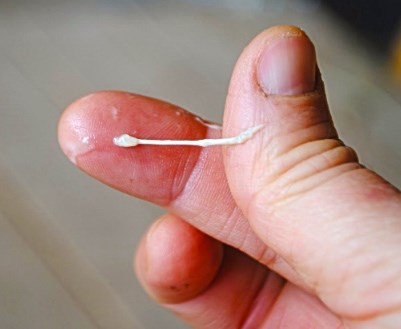Contents
- How to Prevent Recurrent Clogged Ducts
- Keep Up A Good Breast-Feeding Schedule And Habit
- Avoid Any Pressure Or Trauma To The Breasts
- Clear Toxic-Heat In the Breast
- Be In A Good Mood
- How To Treat Clogged Milk Duct?
- Adjust Feeding and Pumping Habit
- Change Of Diet:
- Clogged Milk Duct May Progress To Mastitis
- Mastitis May Progress To Abscess
- Treatment Of Clogged Duct With Hard Lumps Or Small Nodules
- Treatment Of Clogged Duct With Blebs/Blisters
- What Does A Clogged Milk Duct Look Like When It Comes Out?
- Relieve Sharp and Shooting Pain Due to Clogged Milk Ducts
- Relieve Itching And Peeling Skin Caused By Clogged Milk Ducts
- F&Q about Clogged Milk Ducts
In this article, we will discuss remedies on how to clear existing clogged milk ducts and methods for preventing future ones, especially these recurrent clogged ducts in the same spot.
For information on the signs and symptoms of clogged milk ducts, please see this blog post. If you would like to learn more about the underlying causes of clogged milk ducts, please see this other blog post.
How to Prevent Recurrent Clogged Ducts
It is common for breastfeeding mothers to experience recurrent clogged milk ducts, and some mothers may be more prone to developing them due to their own body constitution. However, measures can be taken to prevent recurrences from happening. The four principles are:
Keep Up A Good Breast-Feeding Schedule And Habit
- Adopt a proper latching and baby position
Improper latching position is a significant contributor to the development of clogged milk ducts. To prevent this, it is important to ensure that the newborn is properly positioned and applying sufficient pressure on the nipple and areola to effectively squeeze the milk ducts and extract milk.
- Let the baby suckle the affected breast first
If you notice that one breast is fuller than the other, it may be due to a blockage of dried breastmilk or tissues. In this case of uneven milk supply, it can be helpful to have the baby feed from the affected breast first, as their stronger sucking during times of hunger may help clear the blockage.
- Frequent breast emptying
Frequently empty your breasts to prevent milk from being accumulated. Decide the feeding and pumping schedule based on your baby's age and empty your breasts accordingly. If the baby is not available or hungry, use a pumping machine to keep up. Below chart recommends how frequently and how much your baby should feed according to their ages.

Avoid Any Pressure Or Trauma To The Breasts
- Wear comfortable bras and clothes
Always wear a comfortable, breathable, and well-fitting bra to avoid clogging of milk ducts. Tight bras or clothes can compress the milk ducts and cause the milk to accumulate.
- Avoid trauma to the breasts
Avoid any potential trauma on the breasts. If the breasts get hit by external forces such as bouncing ball, kid accidental kicks, it can lead to breast tissues swelling and eventually clog milk duct.
Clear Toxic-Heat In the Breast
- Adopt Well Balanced Diet
According to Traditional Chinese Medicine (TCM), Toxic Heat in the breasts can cause blockages in the milk ducts. Here, Toxic refers to the presence of bacteria or other harmful substances, while Heat refers to inflammation.
It happens due to various factors, with long-term excessive consumption of heavy and fatty foods being one of the most obvious. This accumulated Toxic Heat then travels to the breasts via the Stomach Channel, causing cloggage of the milk duct.
To prevent clogged milk ducts, it is important to maintain a healthy and balanced diet. It is generally okay to eat red meat, seafood, and dairy products in moderation, but it may be best to avoid or limit these foods if the nursing mother is prone to experiencing clogged milk ducts.
- Use unblock Nursing Tea

Unblock nursing tea is a blend of natural cooling herbs such as licorice, goji berry, dandelion, and honeysuckle flowers. It helps clear the accumulation of Toxin Heat, because they have antibacterial and anti-inflammatory properties that fight off bacteria entering the body and eliminate associated Heat.
Basically, Unblock Nursing Tea is able to remove Toxic Heat due to its effect on Stomach Channel which connects to the breasts.
For mothers who are prone to recurrent clogged milk ducts (but don’t have signs or symptoms currently), using 1 tea bag a day over a month may help to adjust the body's constitution. For those who are currently experiencing early signs of a clogged milk duct, increasing the consumption to 2 tea bags per day may be helpful. The tea bags can be used repeatedly throughout the day, as if it is a daily drink.
Be In A Good Mood
- Avoid Emotional Stress
Emotional stress, such as anger, depression, worry, anxiety or sadness also contributes to Toxic Heat accumulation. When a nursing mother is under such stress, her Qi (energy flow) becomes stagnant in the breast area, resulting plugged milk ducts.
Western research also supports the theory. When a nursing mother has postpartum depression, her oxytocin decreases, which can lead to problems with milk flow and an increased risk of clogged ducts. Oxytocin is a hormone that plays a role in milk ejection and the release of milk from the breasts.
- Have Good Night Sleeps
It is important to try to compensate for lost sleep whenever possible. For instance, if you need to wake up in the middle of the night to feed the baby, taking a nap during the day can help make up for the lost sleep. This can help prevent fatigue and improve your overall mood.
- Try Regular Outdoor Activities
Incorporating regular exercise into your daily routine can be beneficial for your physical and mental well-being. Exercise can help you stay fit, improve blood flow to your muscles, and boost your mood. Taking a walk in nature and getting some fresh air can be especially enjoyable and beneficial. If you have a busy schedule, consider trying some light activities like yoga or walking.
- Seek Help From Others
It is important to be open and honest about your feelings when you are stressed. Don't try to hide your emotions or suppress your frustration. Instead, try to communicate what is troubling you to family and friends. If you feel like you need additional support or assistance, it can be helpful to talk to a professional like a therapist or counselor.
- Use Unblock Nursing Tea
For a more natural solution, you can use Unblock Nursing Tea as a daily drink. It contains herbs such as platycodon and Dong Quai, which help to promote the smooth flow of Qi throughout the body and eliminates Toxic Heat.
How To Treat Clogged Milk Duct?
There are a few treatments and home remedies that may help unclog milk ducts:
Adjust Feeding and Pumping Habit
- Adjust Baby Sucking And Positioning Techniques
Try letting your baby suck on the affected breast first, as the baby's suckling pressure can help to remove the clogged milk duct. Especially when they are hungry, they may suck more vigorously. Additionally, try different breastfeeding positions to ensure that the breast is emptied evenly. For example, when the baby's chin or nose points toward the clogged duct, it's easier to get the milk out of the duct and drain it.
- Add An Extra Pumping Session
To help relieve a clogged milk duct, you can add an additional pumping session or two for the affected breast. The more frequently you pump, the faster the blockage may be relieved.
- Use Higher Grade Pumping Machine
Try the higher-grade setting of your pumping machine. The increased pressure can help break up large lumps under the skin, improving milk flow.
- Use Haakaa
The Haakaa is a new device made of silicone to help mothers with clogged milk ducts. It is reported to be fairly easy and effective.
-
- First mix 1-2 tablespoons of Epsom salt with warm (not hot) water.
- Pour the mixture into the Haakaa.
- Place the Haakaa on your breast for 10-15 minutes.
- The combination of Epsom salt, heat, and suction should work together to gently remove the clog.
- If the clog persists after a few hours, repeat the process.
- Unblock Nursing Tea As Daily Drink
Use Unblock Nursing Tea but increase the daily consumption to 3 tea bags. Depending on how far you've progressed, reduce your daily usage gradually to 1 bag.
Make sure to keep using the product for at least a week until the blockage in your milk ducts is resolved. This tea also helps to relieve pain, itching, swelling and redness on the affected area.
- Relieve Clogged Milk Duct By Husband or Partner
Ask your husband or partner to unclog milk duct. This extra forceful sucking may help potentially in clearing the blockage.
Change Of Diet:
- Stop Consuming Fat And Heavy Foods
To not worsen the symptoms of clogged milk ducts, it may be beneficial to avoid a diet that is high in saturated fats. Foods such as oily foods, cheese, chocolate, red meat, tonifying soup, and dairy products accumulates Toxic Heat in the breasts and aggregate the conditions.
- Stay Hydrated
To promote milk flow and unclog milk ducts, it is important to drink plenty of water. This helps to improve body fluid circulation, which can help to clear plugged milk ducts. Another option is to incorporate Unblock Nursing Tea into your daily routine as a way to support milk flow and help unclog ducts.
Clogged Milk Duct May Progress To Mastitis
If a clogged milk duct is not treated, it may progress to mastitis, which is an inflammation of the breast tissue that can cause redness, warmth, swelling, and pain in the affected area, as well as flu-like symptoms such as fever, chills, and body aches.
To reduce fever and chills, it is important to get plenty of rest and avoid stressful situations. You may also need to take medications to reduce the fever. If the fever persists for more than a day and does not improve, you should consider visiting a doctor to receive treatment, such as antibiotics.
Even if you have mastitis, it is important to continue breastfeeding or pumping to help clear the blockage and prevent further complications.
Mastitis May Progress To Abscess
Despite being rare, mastitis can progress to an abscess if left untreated. It is important to seek medical attention as soon as possible if this occurs, as an abscess is a serious complication of mastitis. An abscess is a collection of pus that has accumulated inside the breast.
Abscesses may be accompanied by symptoms such as fever, chills, fatigue, and rapid heartbeat. Treatment typically involves a drainage procedure performed by a surgeon. In the meantime, you can take antibiotics and painkillers to alleviate any associated symptoms.
Treatment Of Clogged Duct With Hard Lumps Or Small Nodules
A clogged milk duct can manifest as a hard lump of dried milk or a "string" of semi-solidified, fatty milk. These types of blockages can often be removed through the pressure of baby's suckling or machine pump. Alternatively, if the hard lump is close to the nipple pore, it maybe be possible to gently squeeze and scrape it out by using a fingernail.
To address hard lumps or small nodules that are not near the nipple pore, massage them and try to break them to smaller pieces, which are easier to be scaped. Here is a detailed 6 steps guide on how to perform hand massage against a hard lump.
The hand massage can be performed during or between breastfeeding sessions. It is recommended to use a hot pad before the massage to increase milk flow and a cold pad afterwards to help reduce any potential discomfort.
Treatment Of Clogged Duct With Blebs/Blisters
A milk bleb or blister is a blockage in a nipple pore that can be caused by a blockage in a milk duct, friction from clothing, bacteria entering the pore, or chapped nipples.
Most articles on internet don’t recommend popping a milk bleb or blister at home. However, the discomfort can significantly impact quality of life and make breastfeeding difficult. On the other hand, it may not always be easy to access medical treatment for this condition.
If you do decide to pop the bleb or blister yourself, it is important to use sterilized equipment to avoid the risk of bacterial infection. Here is the detailed article on steps:
- Clean the breast and nipple with soap and water.
- Disinfect the area with 70% isopropyl alcohol.
- Use a disposable syringe to puncture the damaged skin from the edge.
- Use the syringe to draw out fluid using the vacuum effect. To do this, carefully pull the handle of the syringe so that the vacuum of the tube can draw out the liquid.
- Squeeze the blister to remove any remaining fluid.
- Clean the wound with saline water.
What Does A Clogged Milk Duct Look Like When It Comes Out?

A clogged milk duct is often indicated by the presence of a white or yellow bump or lump on the breast accompanied by swelling and redness. When the cloggage comes out, it may appear like a white or yellowish plug, made up of dead cells, bacteria, and milk.
Pressing on the affected area with your nail should allow the hardened milk in the clogged duct to be released. Once done, you may notice an immediate reduction in pressure and heaviness in your breast, as well as improved milk flow during breastfeeding or pumping.
It is common for small nodules to resolve on their own within a couple of feedings, while hard lumps may become softer and smaller until they eventually disappear. The accompanying symptoms such as redness, itching, pain, and swelling may take longer to fade, but should improve within a few days.
It is suggested to continue using Unblock nursing Tea (one bag per day) for a few days after all symptoms have resolved in order to fully treat the condition.
Relieve Sharp and Shooting Pain Due to Clogged Milk Ducts
Clogged milk ducts are often accompanied by sharp and shooting pain. Even after the blockage is resolved, some pain may persist. Here are some techniques for relieving the pain associated with clogged milk ducts. For more details, you can check out this article.
- Verify that your baby has a proper latch by ensuring that their mouth is fully around your nipple, with the nipple positioned in the back of their mouth. If necessary, consider seeking the guidance of a lactation consultant to help you adjust your latch.
- Try different nursing positions to find the one that is most comfortable for you.
- If the pain is too severe, try taking a break from direct nursing and instead use a breast pump or hand express milk to maintain your milk supply.
- To reduce swelling and alleviate discomfort, you can apply a cold or frozen pad after feeding, or try using frozen cabbage or potato slices. Alternatively, you can use a warm pad to relax your breast tissue before feeding.
- If you have chapped nipples, you may want to use nipple shields to create a barrier between your baby's mouth and your breast in order to avoid further irritation of the nipple fissure.
- If you need to take a pain killer, use one that is safe for both you and your baby, such as Ibuprofen (sold under the brand names Advil and Motrin) or Tylenol. These medications can help reduce pain and fever-related symptoms.
- Using Unblock Nursing Tea can help clear Toxic Heat, which is often the root cause of sharp and shooting pain while breastfeeding. For severe pain, use three tea bags a day. In addition to reducing pain, this tea may also help with swelling, redness, and itching of the breasts.
- If the pain persists, it is important to seek medical advice from your healthcare provider for additional treatment options.
Relieve Itching And Peeling Skin Caused By Clogged Milk Ducts
Itching and peeling skin can sometimes occur with clogged milk ducts due to the tightness of the skin caused by the breast ducts becoming overfilled with trapped milk. This extra pressure causes the skin to stretch to accommodate the extra milk.
To help relieve peeling and itching in the skin caused by clogged milk ducts, it is important to keep the breast area clean. After each feeding or pumping, clean the nipple and breast properly, using a gentle soap or Epsom salt water, and then drying the area well to prevent moisture retention.
While doing so, it is important to maintain a balance of moisture, not letting the skin get too dry or too moist. Excessive moisture can lead to further irritation, while too much dryness can cause itchy skin. Aim to keep the skin hydrated and comfortable.
You can also try soothing creams or itching relief lotions such as lanolin cream, calamine lotion, or all-purpose nipple cream (APNO). APNOs contain ingredients with anti-inflammatory, antifungal, and antibacterial properties and may be prescribed by doctors to treat the underlying causes of pain and infection.
Another option is to use fragrance-free moisturizers such as cocoa butter or coconut oil. For more information on this topic, you may want to read our article on itching or peeling of the breast skin while breastfeeding.
F&Q about Clogged Milk Ducts
- Will A Clogged Milk Duct go away by itself?
Some of the blocked milk ducts clear up on their own with baby suckling and machine pumping. Apply the aforementioned "prevention" approaches and observe.
However, deep, persistent, and recurrent plugged milk ducts, particularly in the form of lumps and nodules, are difficult to go away by itself. In these cases, it is preferable to use the above-mentioned ‘home remedies’ to unclog milk ducts.
- How Long does it take to unclog a milk duct?
Most clogged ducts clear up in 1–2 days, whether you treat them or not. The fastest way to get rid of a clogged duct is to breastfeed regularly and consistently. Additionally, every time you breastfeed, you have to make sure that the breast with the clogged duct is completely emptied.
- What causes clogged milk ducts during pregnancy?
Pregnant women can sometimes experience clogged milk ducts as well , especially starting from the second trimester of pregnancy. This is due to the increased levels of prolactin, progesterone, and estrogen in their bodies, which stimulate the development of milk ducts and trigger milk production, leading to swelling and congestion in the breast tissue. This can result in clogged milk ducts, although it is rare. Some pregnant women may experience small amounts of breast milk leakage or dripping as a result.
- What causes Clogged milk ducts not breastfeeding, not pregnant?
There are several potential causes of clogged milk ducts in people who are not pregnant or breastfeeding, including wearing tight clothing or underwire bras, dehydration, stress, hormonal changes, mastitis, and breast trauma.
- Can I squeeze or pop a clogged milk duct?
You can pop a clogged milk duct, even though many online sources advise against it. To do so, follow these steps carefully.
- Should I Pump A Clogged Milk Duct?
Using a breast pump with higher settings to express milk after each nursing session can be helpful for clearing clogged milk ducts, especially if the baby has a poor latch or is unable to fully empty the breast.
- Can pumping make a clogged milk duct worse?
No, pumping mostly cannot make clogged milk duct worse. In fact, it clears up the milk duct and boost milk supply. You should also know that, if clogged milk is not drained with pumping or baby feeding, it can lead to a condition mastitis, which is a more severe condition.

